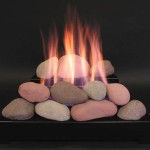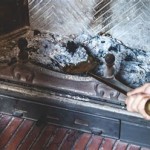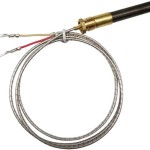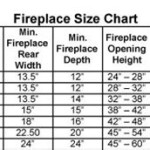Mounting Television Above Gas Fireplace: Considerations and Best Practices
Mounting a television above a gas fireplace is a popular design choice that aims to maximize space and create a focal point in a living area. However, it presents several challenges related to heat, safety, wiring, and viewing angles. Understanding these challenges and implementing appropriate solutions is crucial to ensure the longevity of the television, the safety of the installation, and the viewing comfort of the occupants.
The aesthetics of a television mounted above a fireplace are undeniable. It offers a streamlined appearance, consolidating entertainment and ambiance into a single zone. This arrangement is particularly attractive in smaller spaces where wall space is limited. Furthermore, it can elevate the perceived value of a room, making it appear more modern and sophisticated. However, the practical considerations often outweigh the aesthetic benefits if not addressed properly.
Understanding Heat Management
The primary concern when mounting a television above a gas fireplace is the potential for heat damage. Gas fireplaces, while convenient, generate significant heat that can rise and damage the sensitive electronic components within the television. Excessive heat can shorten the lifespan of the television, cause discoloration of the screen, and even lead to complete failure.
Several factors influence the amount of heat that reaches the area above the fireplace. These include the BTU (British Thermal Units) rating of the fireplace, the design of the fireplace insert or unit, the presence of a mantel or heat shield, and the distance between the top of the fireplace and the bottom of the television.
The BTU rating indicates the amount of heat the fireplace generates per hour. A higher BTU rating means more heat is produced, increasing the risk to the television. The design of the fireplace itself is also a critical factor. Some fireplaces are designed to vent heat upwards, while others are designed to direct heat outwards and away from the wall.
A mantel serves as a heat shield, deflecting rising heat away from the wall above. The effectiveness of a mantel depends on its depth and the material from which it is constructed. Deeper mantels offer better protection, and materials like stone or concrete absorb and dissipate heat more effectively than wood.
The distance between the top of the fireplace and the bottom of the television is a crucial determinant of heat exposure. A greater distance allows for more heat dissipation before it reaches the television. A minimum distance of 12 inches is generally recommended, but this may not be sufficient for all fireplaces. Regular monitoring of the wall temperature above the fireplace, especially during extended use, is advised.
To mitigate heat risks, consider the following strategies: installing a deeper mantel, using a heat shield, choosing a fireplace with a lower BTU rating or a design that directs heat away from the wall, and increasing the distance between the fireplace and the television. Additionally, actively monitoring the temperature of the wall above the fireplace is advisable. If the wall becomes excessively hot to the touch, consider a different mounting location.
Ensuring Safe Installation and Wiring
Proper structural support is essential for safely mounting a television above a gas fireplace. The wall above the fireplace must be capable of supporting the weight of the television and the mounting bracket. This typically involves anchoring the bracket to wall studs or using specialized drywall anchors designed for heavy loads.
Before drilling any holes, it is critical to locate and avoid any electrical wiring, gas lines, or plumbing pipes that may be concealed within the wall. Using a stud finder with electrical and plumbing detection capabilities is highly recommended. If there is any uncertainty about the location of these utilities, consulting a qualified electrician or plumber is crucial.
Wiring management is another critical aspect of a safe and aesthetically pleasing installation. All cables, including power cords, HDMI cables, and coaxial cables, should be neatly organized and concealed within the wall. This can be achieved by installing in-wall cable management kits or using conduit to run the cables behind the wall. Avoid running cables directly across the surface of the wall, as this creates a tripping hazard and detracts from the overall appearance.
Ensure that all electrical connections are properly grounded and comply with local electrical codes. Using surge protectors to protect the television from power surges is also recommended. Furthermore, be aware of the specific requirements for gas fireplace installations in the local jurisdiction. These requirements may dictate clearances from combustible materials and ventilation requirements.
The mounting bracket itself should be chosen based on the size and weight of the television. Overloading a mounting bracket can lead to failure and potentially dangerous consequences. Use a high-quality, adjustable bracket that allows for tilting and swiveling the television to achieve the optimal viewing angle. A professional installation is recommended, particularly if the individual lacks experience with electrical wiring, structural support, or gas line safety.
Optimizing Viewing Angles and Ergonomics
Mounting a television too high can lead to neck strain and discomfort during prolonged viewing. The optimal viewing angle is generally considered to be at or slightly below eye level when seated. When mounting a television above a fireplace, it is important to consider the viewing distance and the height of the seating area to determine the appropriate mounting height.
A general rule of thumb is to position the center of the television screen at eye level when seated. However, this may not always be possible when mounting above a fireplace. In such cases, tilting the television downwards can help to compensate for the elevated viewing angle. Adjustable mounting brackets that allow for tilting are essential for achieving the optimal viewing experience.
The size of the television also influences the optimal viewing distance. Larger televisions require greater viewing distances to avoid eye strain and ensure a comfortable viewing experience. A common recommendation is to have a viewing distance that is approximately 1.5 to 2.5 times the diagonal screen size of the television.
Furthermore, ambient lighting can affect the viewing experience. Avoid placing the television in direct sunlight or in areas with excessive glare. Using blackout curtains or blinds can help to reduce glare and improve visibility. Consider the position of windows and other light sources when determining the optimal mounting location for the television.
Finally, remember to consider the overall aesthetics of the room. Ensure that the television is properly centered above the fireplace and that the mounting bracket is concealed as much as possible. Utilize cable management solutions to hide all wires and create a clean and uncluttered appearance. The goal is to integrate the television seamlessly into the room's design while ensuring a comfortable and enjoyable viewing experience.
Before undertaking this project, individuals should carefully assess their skills and comfort level. If there is any doubt about the ability to safely and properly install the television, consulting with qualified professionals, such as electricians, carpenters, and HVAC technicians, is highly recommended. This ensures the safety, functionality, and longevity of the installation while maximizing the viewing experience.

Can I Mount My Tv Above The Fireplace

Ortal S Innovative Technology Makes It Safe To Mount A Tv Above Your Fireplace
Can I Mount A Tv Over My Fireplace Heatilator

Can I Mount My Tv Above The Fireplace

ᑕ❶ᑐ What To Consider Before Mounting A Tv Above Fireplace

How To Mount A Tv Over Fireplace Vertical Chimney Care

Mounting Your Tv Above Fireplace

ᑕ❶ᑐ What To Consider Before Mounting A Tv Above Fireplace

Can I Hang A Tv Over My Fireplace Woodlanddirect Com

Can I Mount A Tv Over My Fireplace Warming Trends








